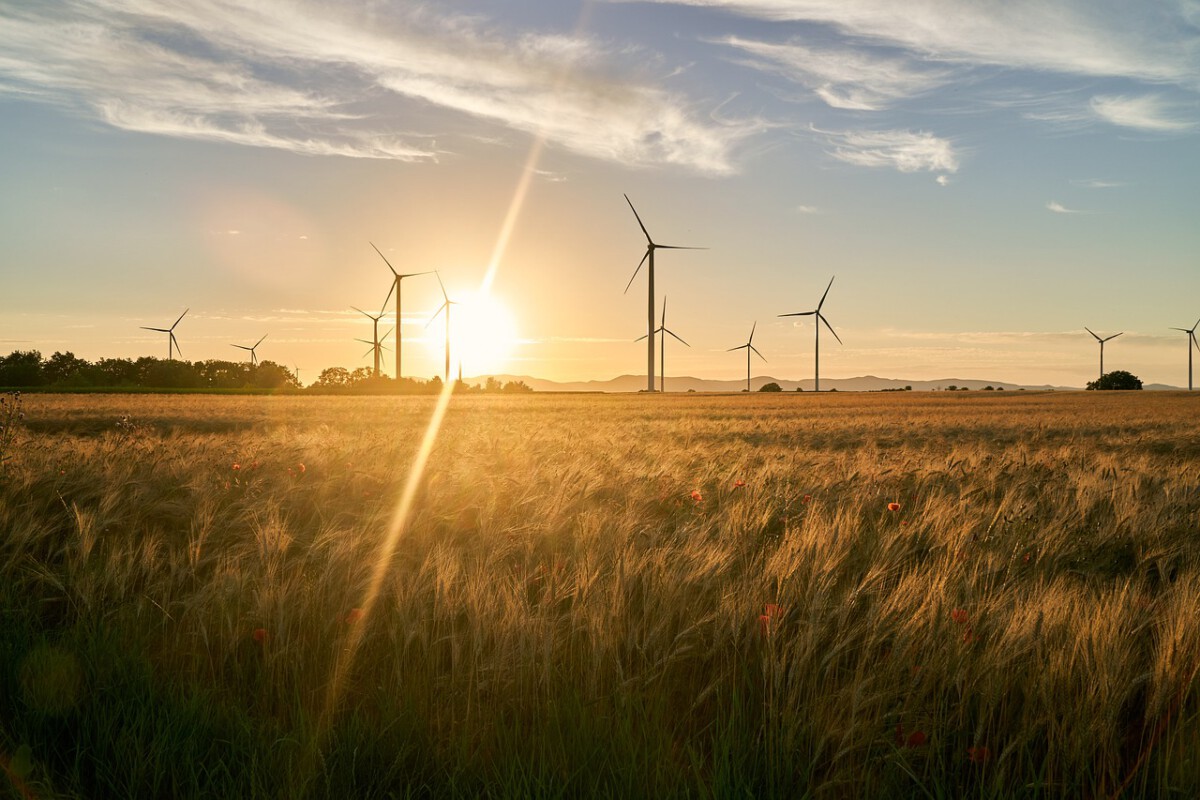Texas has emerged as a powerhouse in the renewable energy sector, leading the nation in growth and innovation. With its vast landscapes and favorable climate, the state has capitalized on its natural resources to become a frontrunner in wind and solar energy production. This article delves into the statistics and facts that highlight Texas’s leadership in renewable energy, showcasing its achievements and future potential.
The Rise of Wind Energy in Texas

Texas is the largest producer of wind energy in the United States, boasting an impressive installed capacity of over 30,000 megawatts (MW). This accounts for approximately 25% of the total wind energy capacity in the nation. The state’s expansive plains and consistent wind patterns make it an ideal location for wind farms. In 2022 alone, Texas added over 2,000 MW of new wind capacity, further solidifying its position as the leader in this sector. The growth in wind energy has not only contributed to the state’s energy independence but also reduced its carbon footprint significantly. Moreover, communities near wind farms have benefited from increased employment opportunities and economic development. Wind energy in Texas is a testament to how natural resources can be harnessed for sustainable progress.
– **Key Statistics:**
– Over 30,000 MW of installed wind capacity.
– 25% of the nation’s total wind energy capacity.
– 2,000 MW added in 2022.
Solar Energy Growth: A Bright Future

In addition to wind energy, Texas is also making significant strides in solar energy production. The state ranks second in the nation for solar capacity, with over 12,000 MW installed as of 2023. The Texas solar market has seen exponential growth, with a 50% increase in capacity from 2021 to 2022. This growth is driven by declining costs of solar technology and increased demand for clean energy sources. The sunny climate of Texas offers a natural advantage, allowing solar panels to generate substantial energy. Residents and businesses alike are increasingly opting for solar installations, attracted by the long-term cost savings and environmental benefits. The solar energy boom in Texas is not just about numbers; it’s about embracing a sustainable future.
– **Key Statistics:**
– Over 12,000 MW of installed solar capacity.
– 50% increase in capacity from 2021 to 2022.
– Significant cost reductions in solar technology.
Economic Impact of Renewable Energy

The renewable energy sector in Texas is not only beneficial for the environment but also for the economy. The industry has created thousands of jobs, with estimates suggesting that over 100,000 Texans are employed in renewable energy roles. Additionally, investments in renewable energy projects have generated billions of dollars in economic activity, contributing to local and state economies. For instance, wind farms often require a large workforce for both construction and maintenance, boosting local employment. Solar installations on residential and commercial properties have similarly stimulated job growth across the state. Furthermore, the influx of renewable energy projects has attracted global investors, further enhancing Texas’s economic landscape.
– **Economic Highlights:**
– Over 100,000 jobs created in renewable energy.
– Billions of dollars generated in economic activity.
– Increased investment in local communities.
Policy and Incentives Driving Growth

Texas’s growth in renewable energy can be attributed to supportive policies and incentives. The state has implemented various programs to encourage the development of renewable energy projects, including tax incentives and grants for solar and wind installations. Additionally, the deregulated energy market in Texas allows for competition and innovation, further propelling the growth of renewable energy sources. These policies have not only made renewable energy projects financially viable but also attractive to investors. The state government’s commitment to clean energy is evident in its legislative measures that promote sustainable practices. By creating a conducive environment for renewable energy, Texas has set a benchmark for other states to follow.
– **Key Policies:**
– Tax incentives for renewable energy projects.
– Grants for solar and wind installations.
– Deregulated energy market fostering competition.
Challenges Facing Renewable Energy in Texas

Despite its successes, the renewable energy sector in Texas faces several challenges. One of the primary concerns is the intermittency of renewable energy sources, particularly wind and solar. This can lead to fluctuations in energy supply and demand, necessitating the development of energy storage solutions. Additionally, regulatory hurdles and opposition from traditional energy sectors can impede progress. The challenge of integrating renewable energy into the existing grid system is another significant issue. Furthermore, the need for technological advancements in storage solutions remains pressing to ensure a consistent energy supply. Overcoming these challenges will be crucial for maintaining Texas’s leadership in renewable energy.
– **Challenges:**
– Intermittency of renewable energy sources.
– Need for energy storage solutions.
– Regulatory hurdles and opposition from traditional energy sectors.
The Future of Renewable Energy in Texas

Looking ahead, the future of renewable energy in Texas appears bright. With ongoing advancements in technology and increasing public support for clean energy, the state is poised to continue its leadership in the sector. Texas aims to achieve a goal of 50% renewable energy by 2030, further reducing its carbon footprint and enhancing energy independence. This ambitious target underscores the state’s commitment to sustainability and innovation. The integration of smart grid technologies and enhanced storage solutions are expected to play a pivotal role in achieving these goals. As Texas continues to harness its renewable resources, it sets a precedent for other states to emulate.
– **Future Goals:**
– Achieve 50% renewable energy by 2030.
– Continued investment in technology and infrastructure.
– Enhance energy independence and sustainability.
Texas’s leadership in renewable energy growth is a testament to its vast resources, innovative spirit, and supportive policies. As the state continues to invest in wind and solar energy, it sets an example for others to follow. The combination of economic benefits, job creation, and environmental sustainability positions Texas as a model for renewable energy development in the United States and beyond. By focusing on overcoming challenges and embracing future opportunities, Texas is not just leading the nation in renewable energy growth; it is paving the way for a sustainable energy future.




